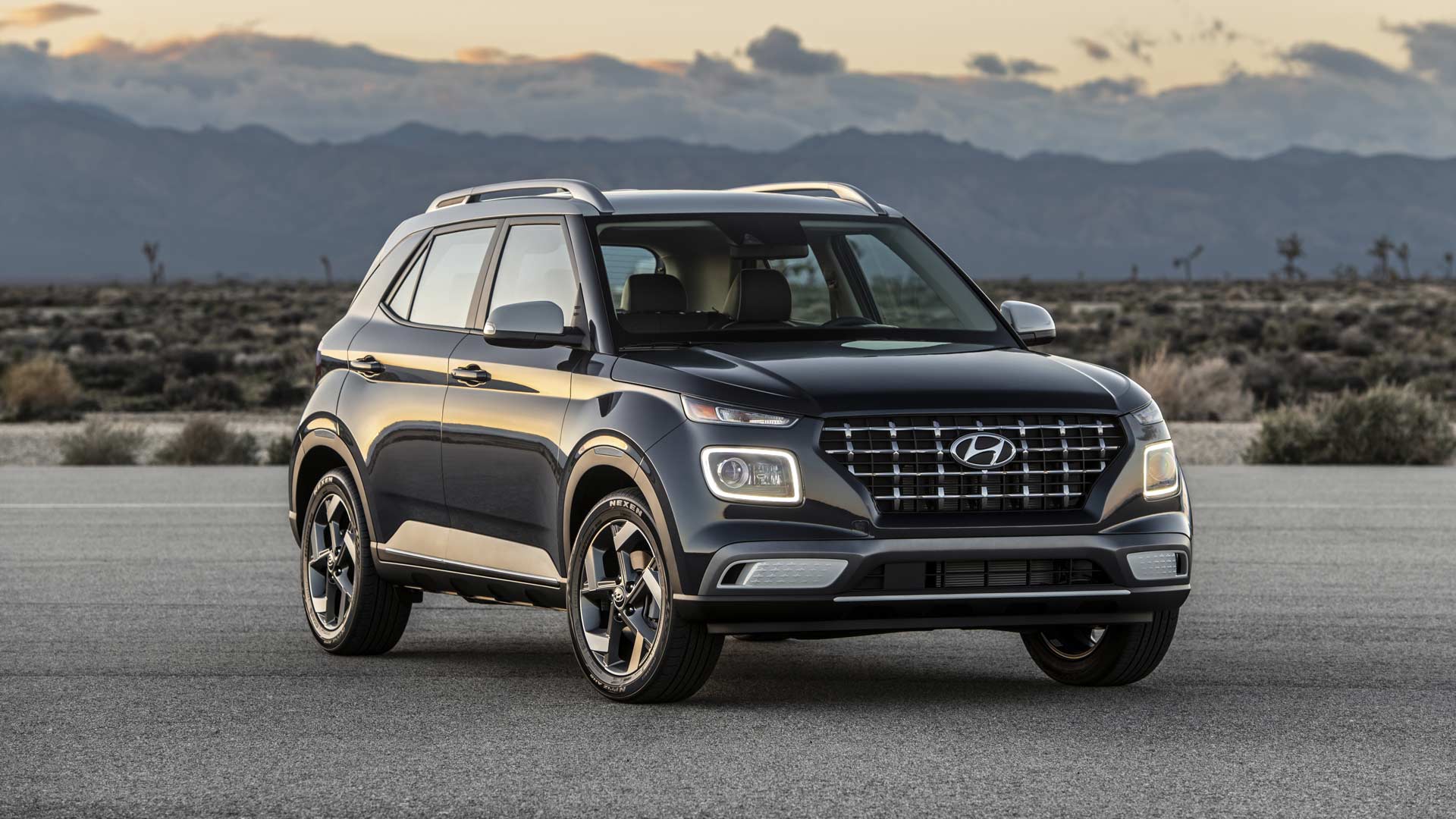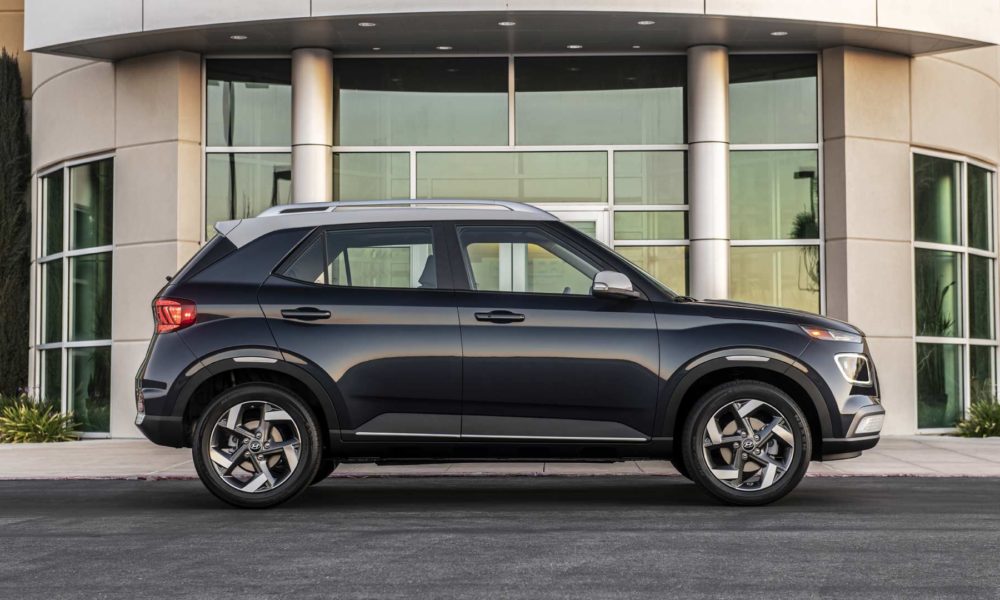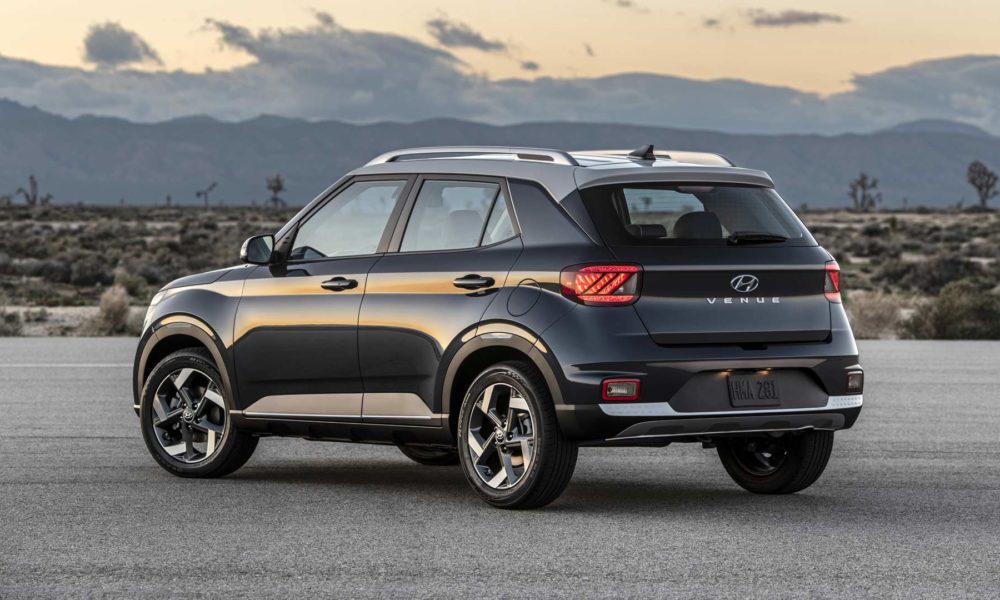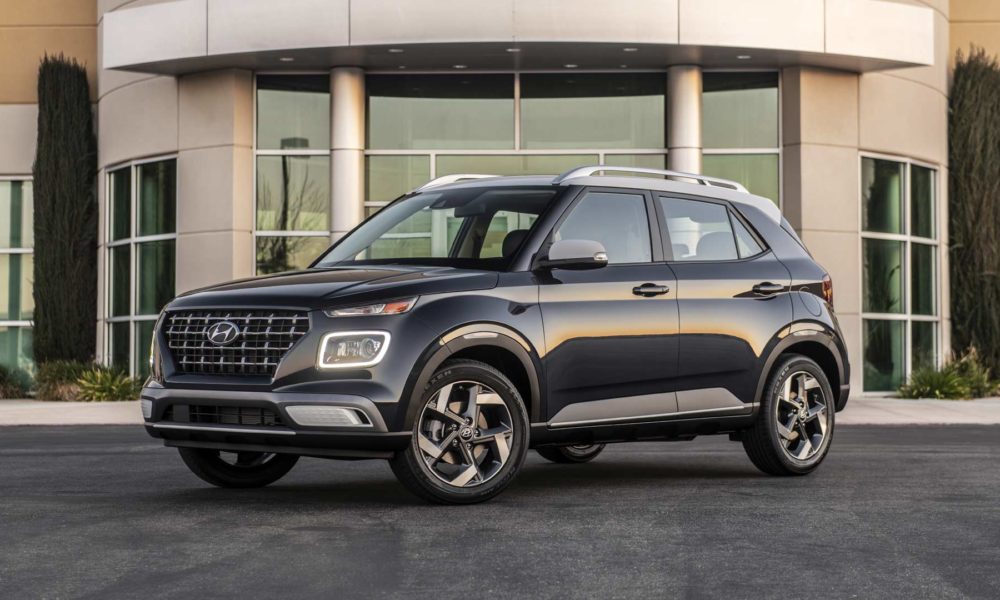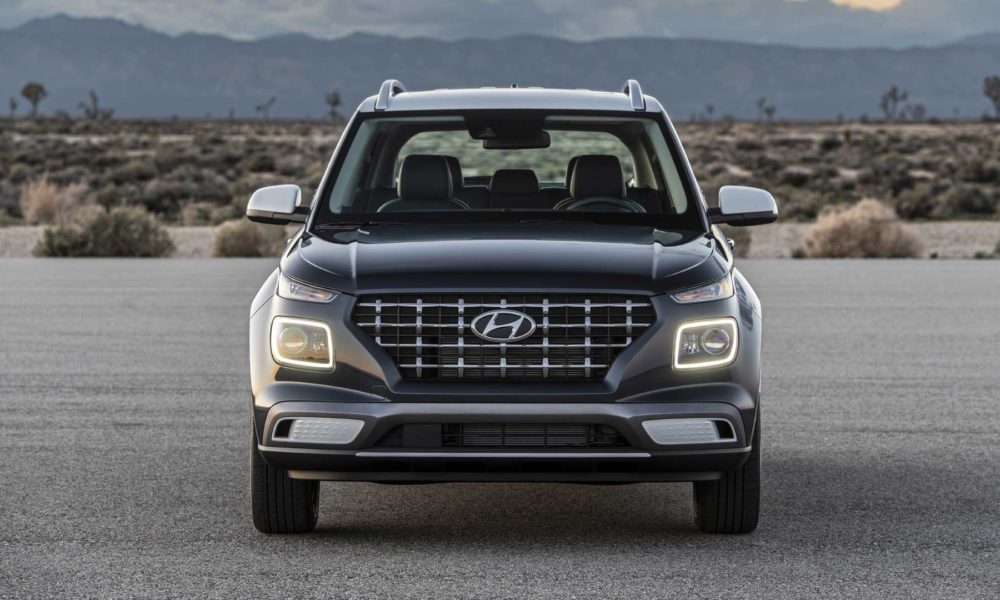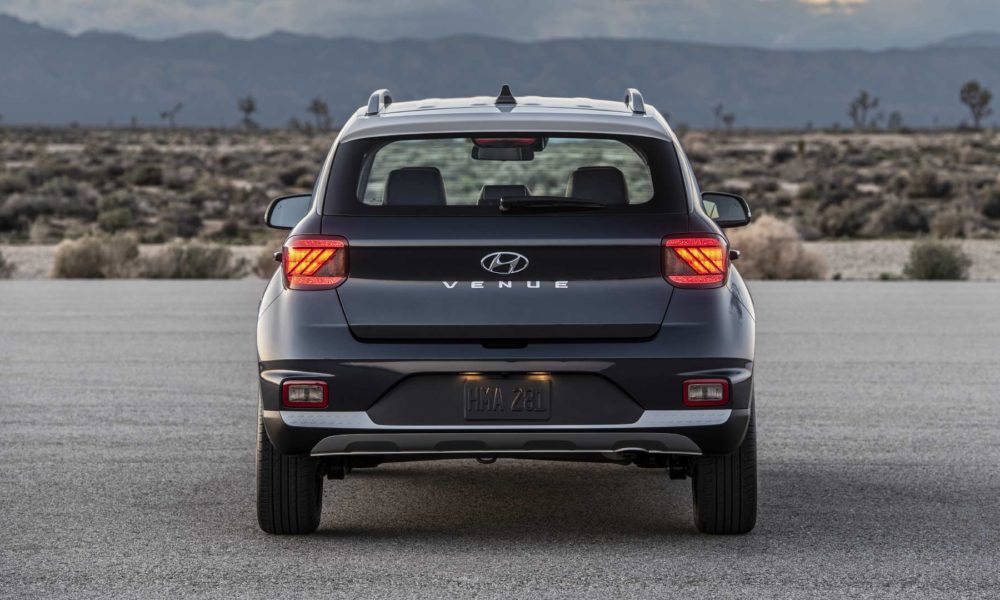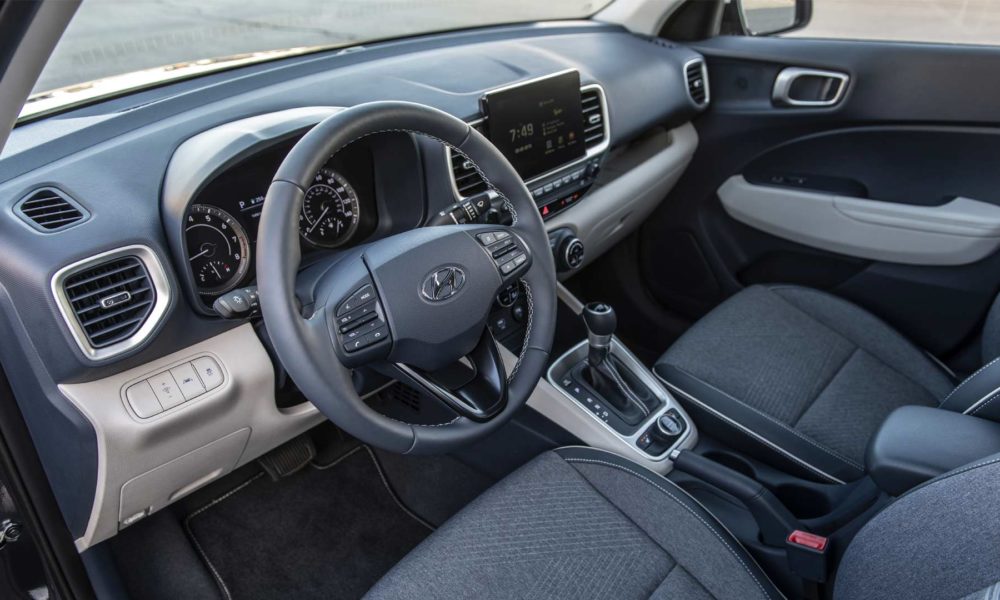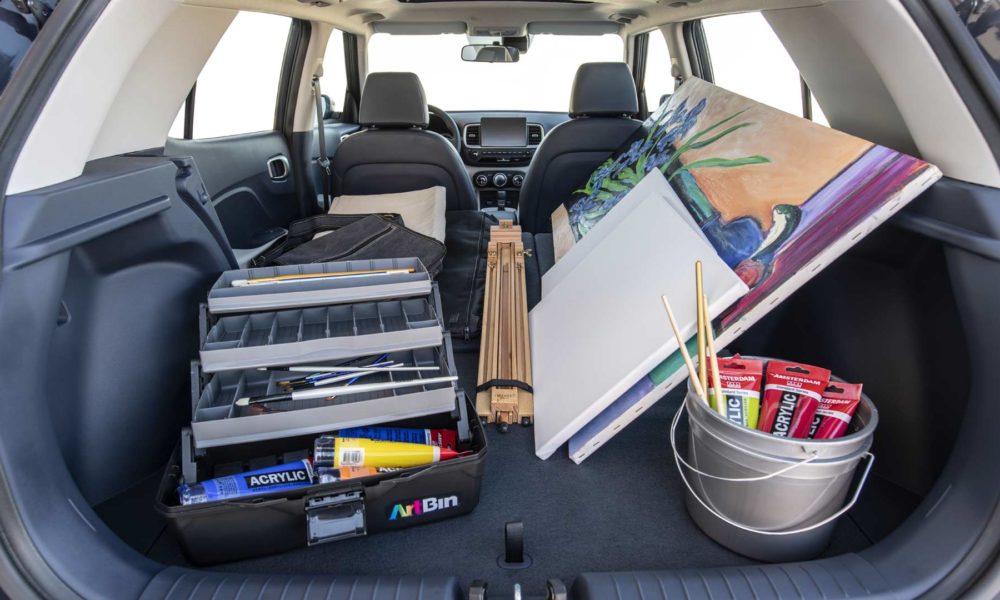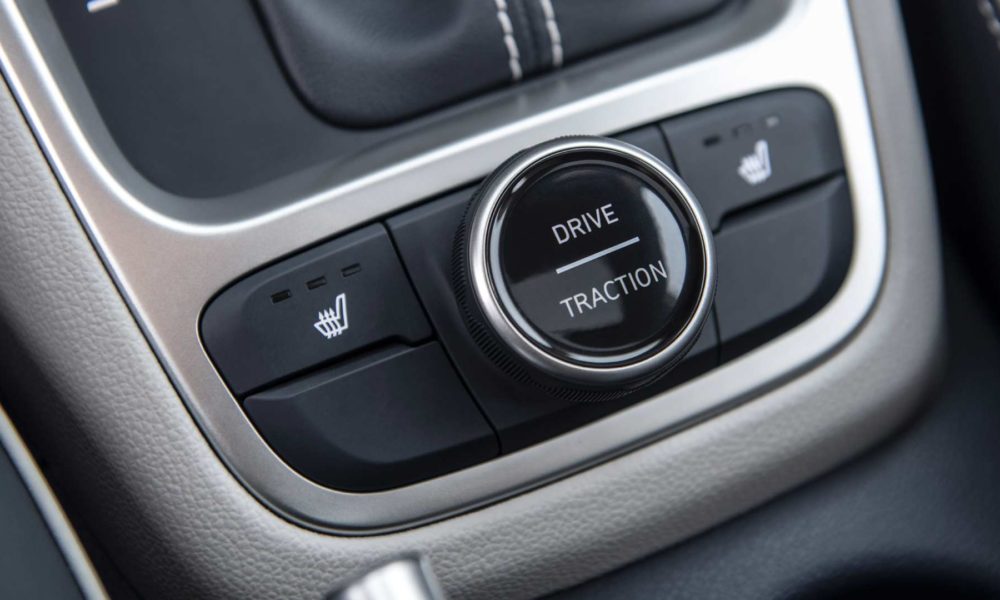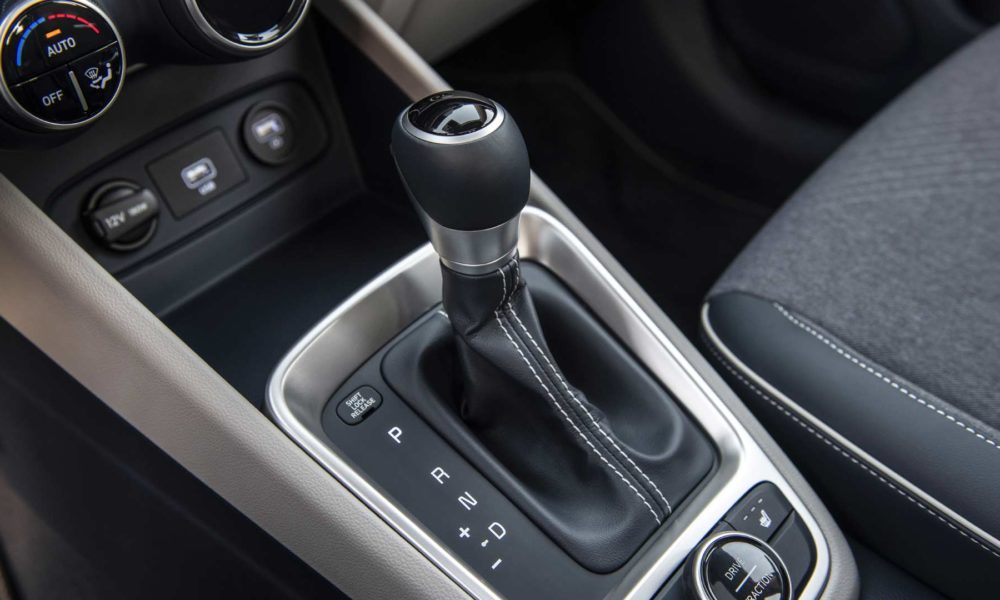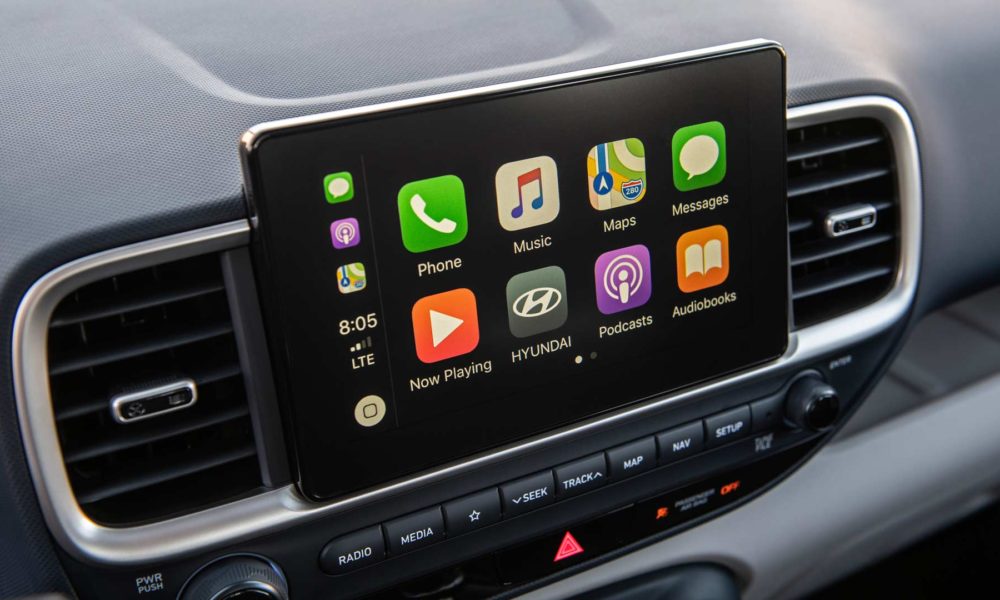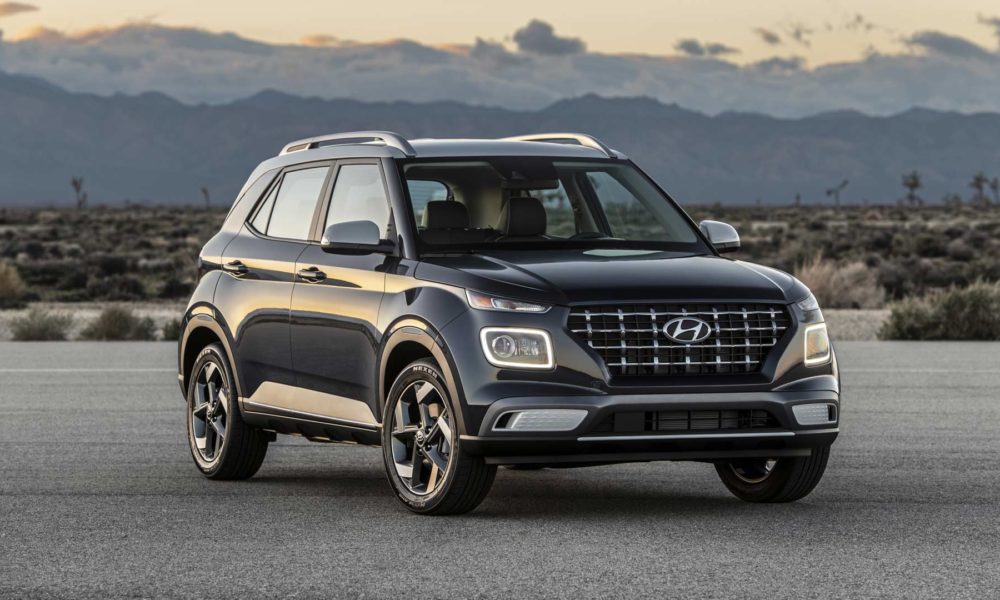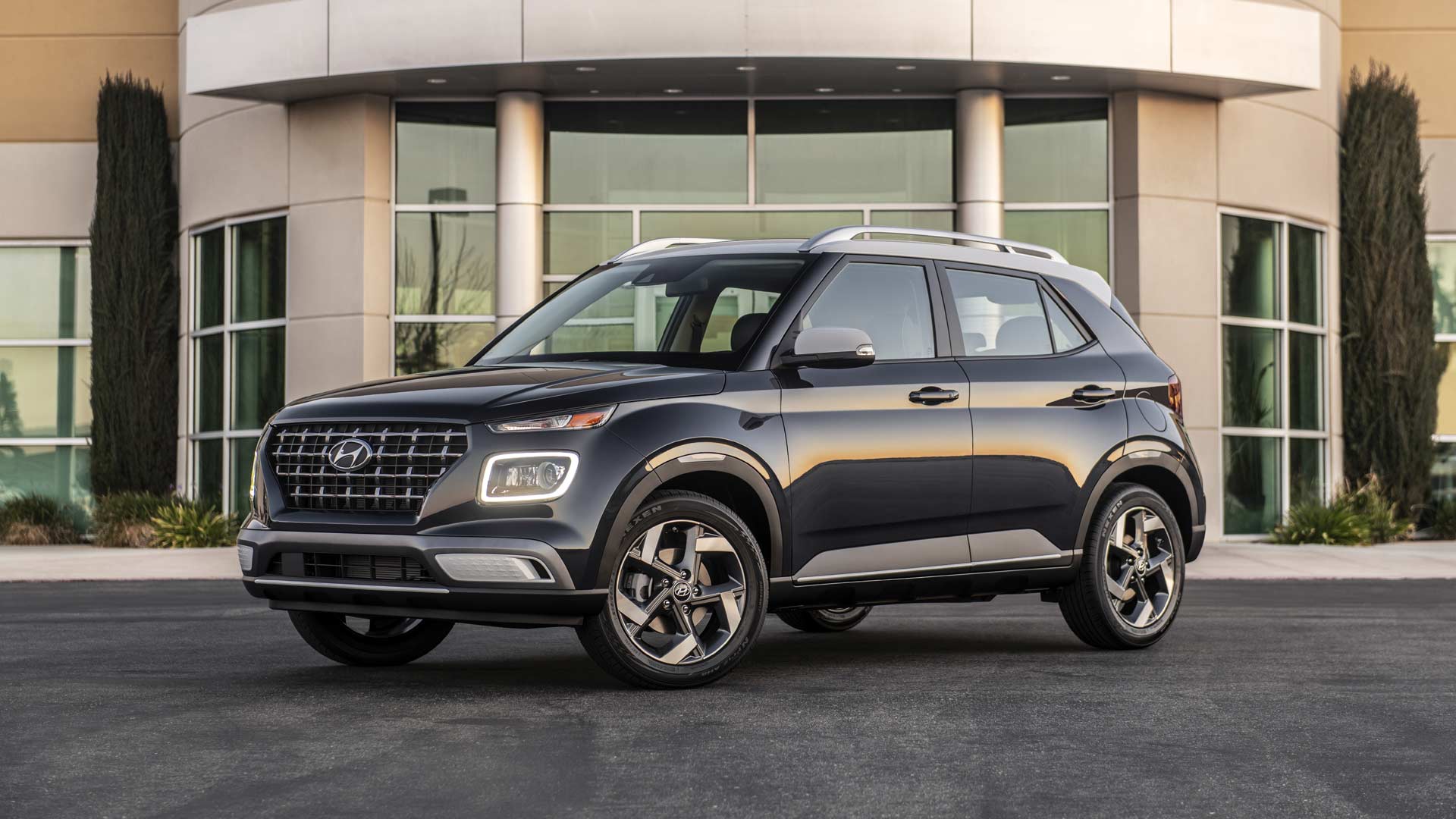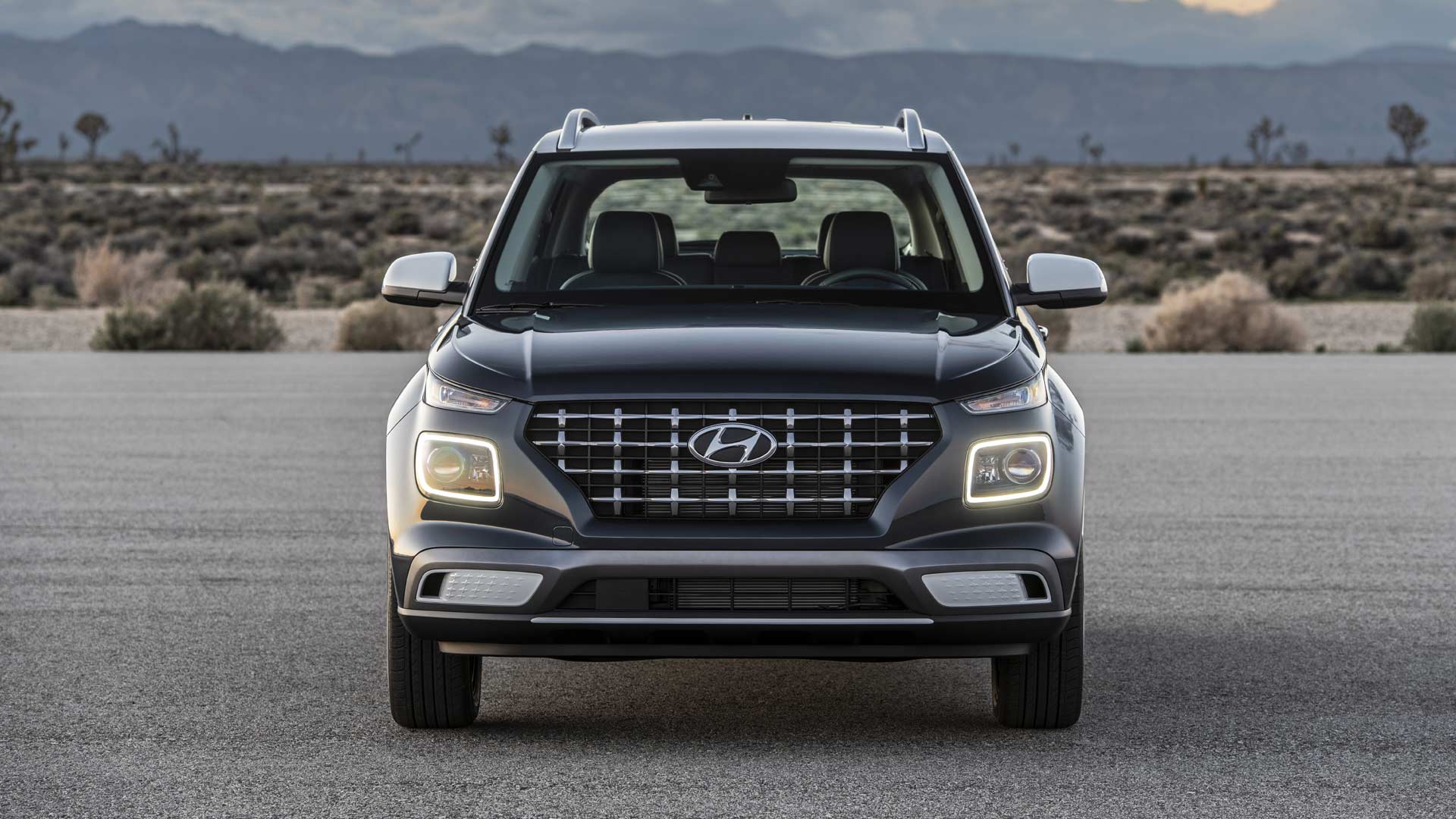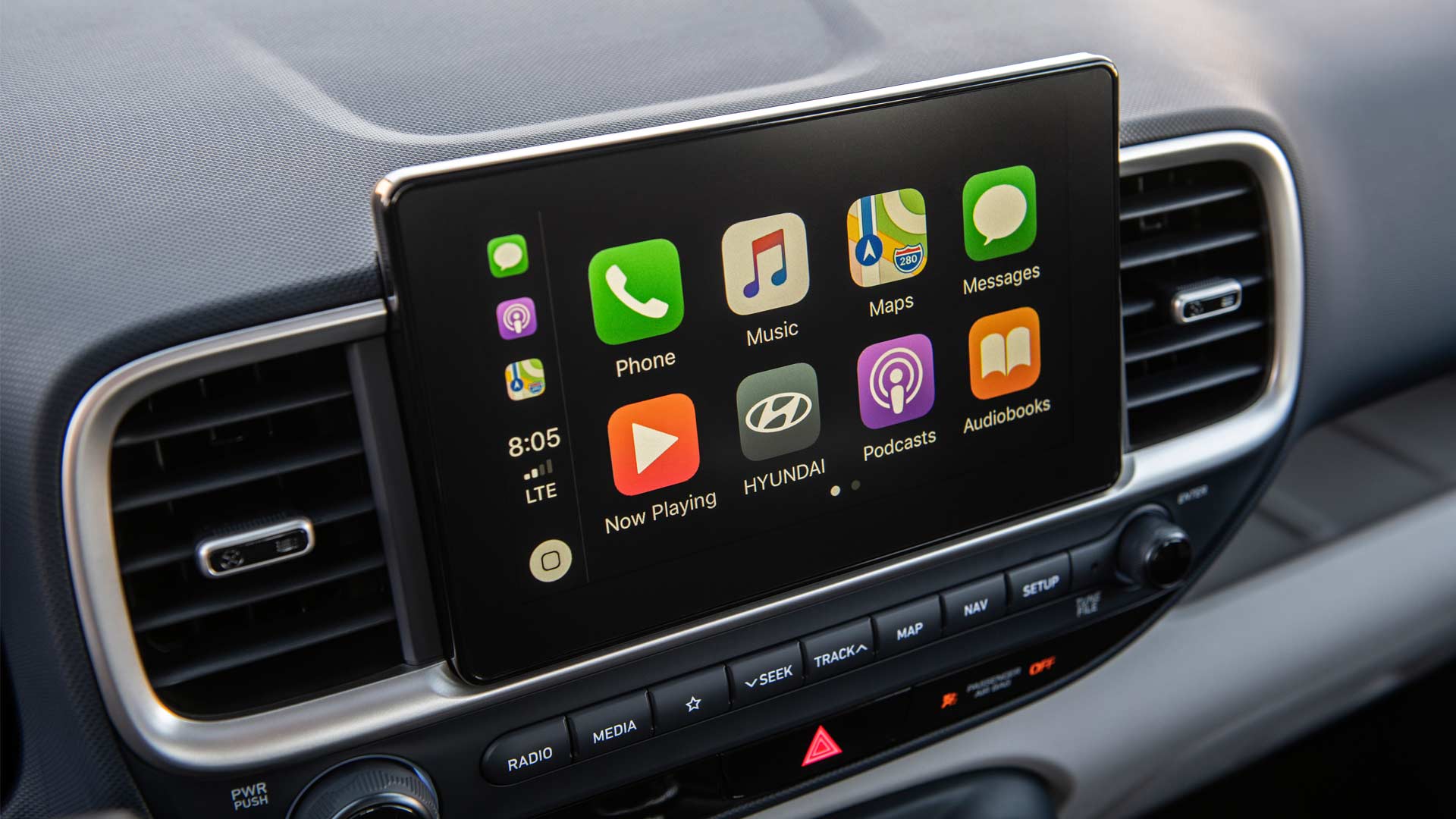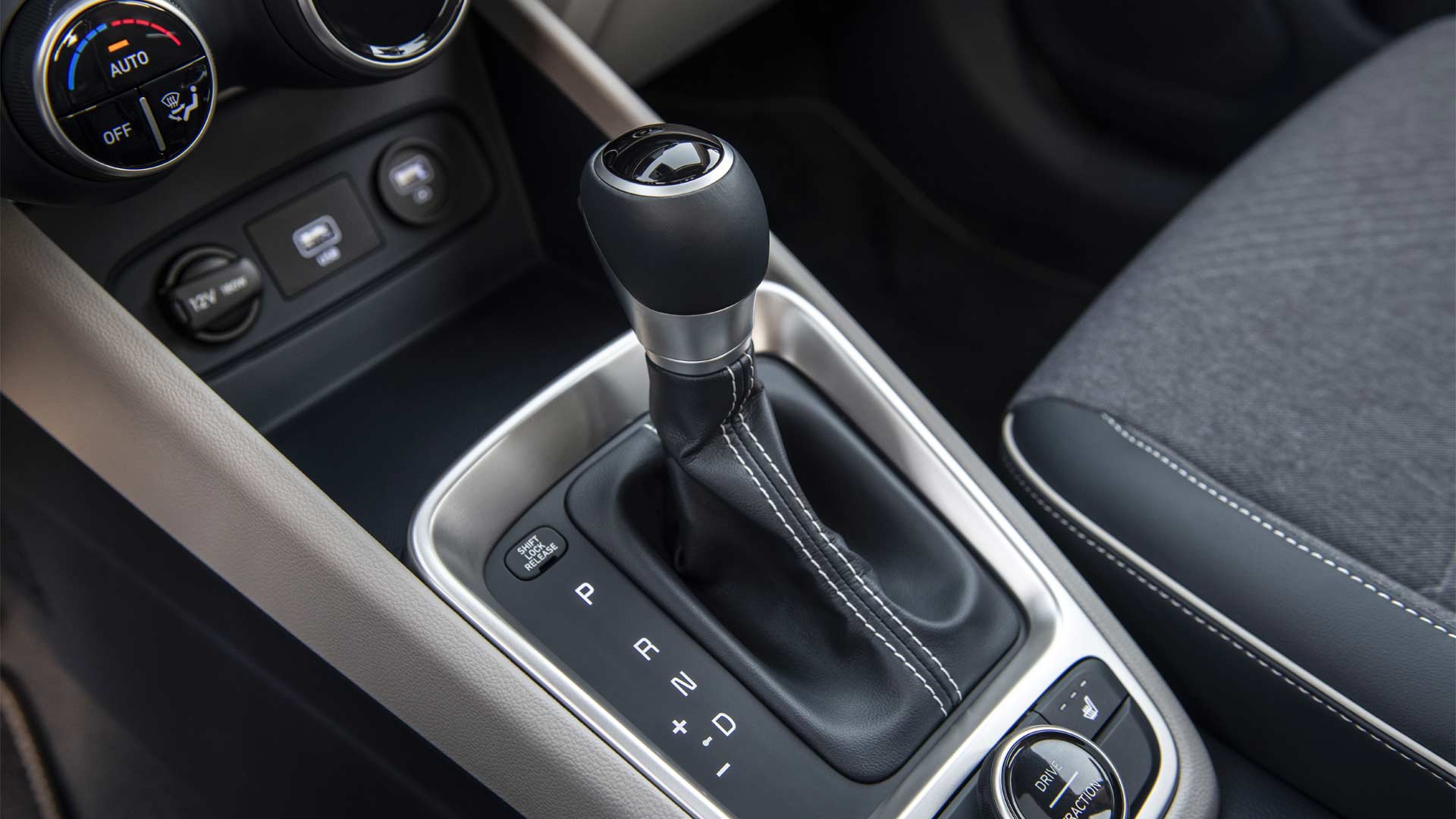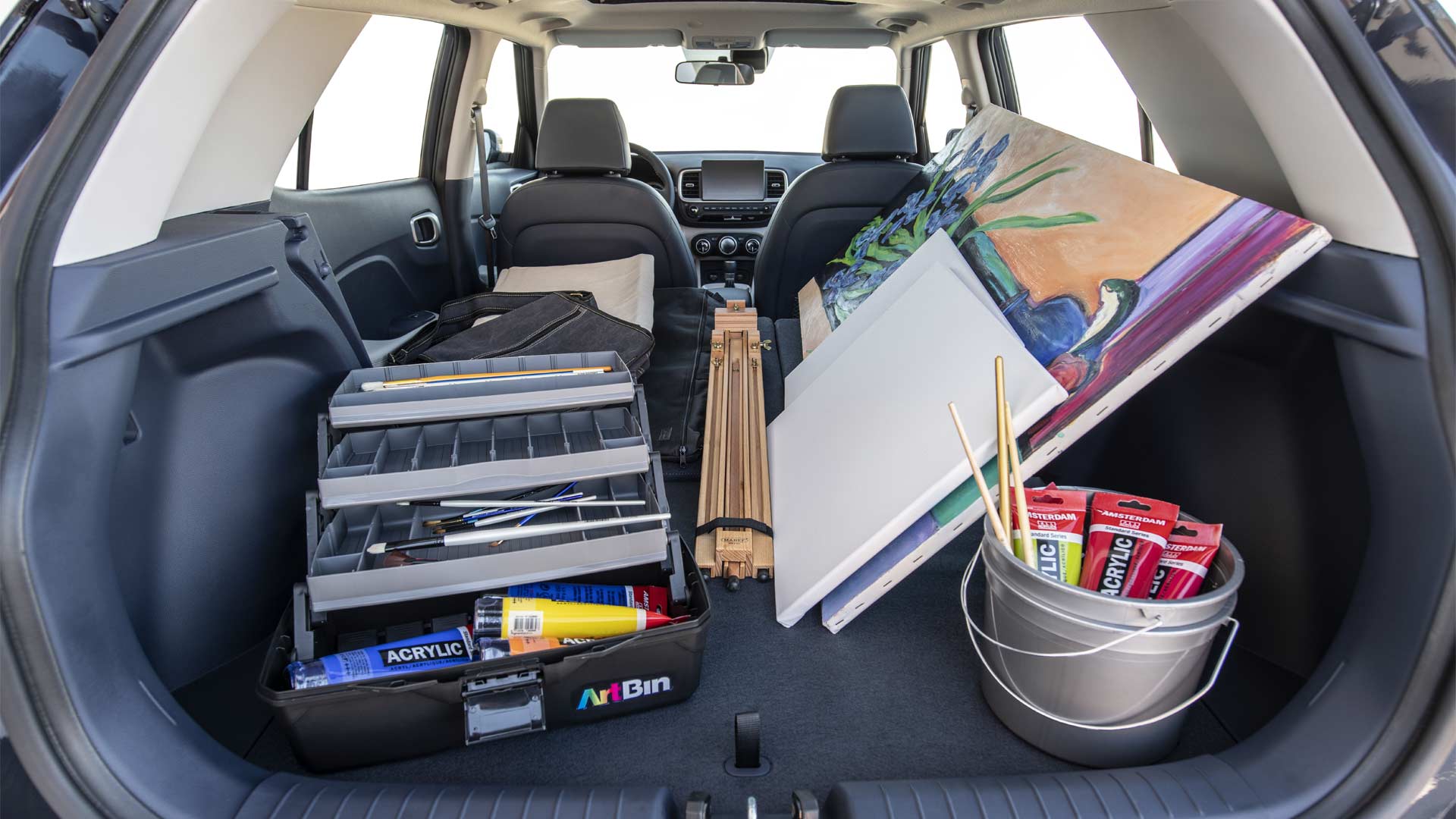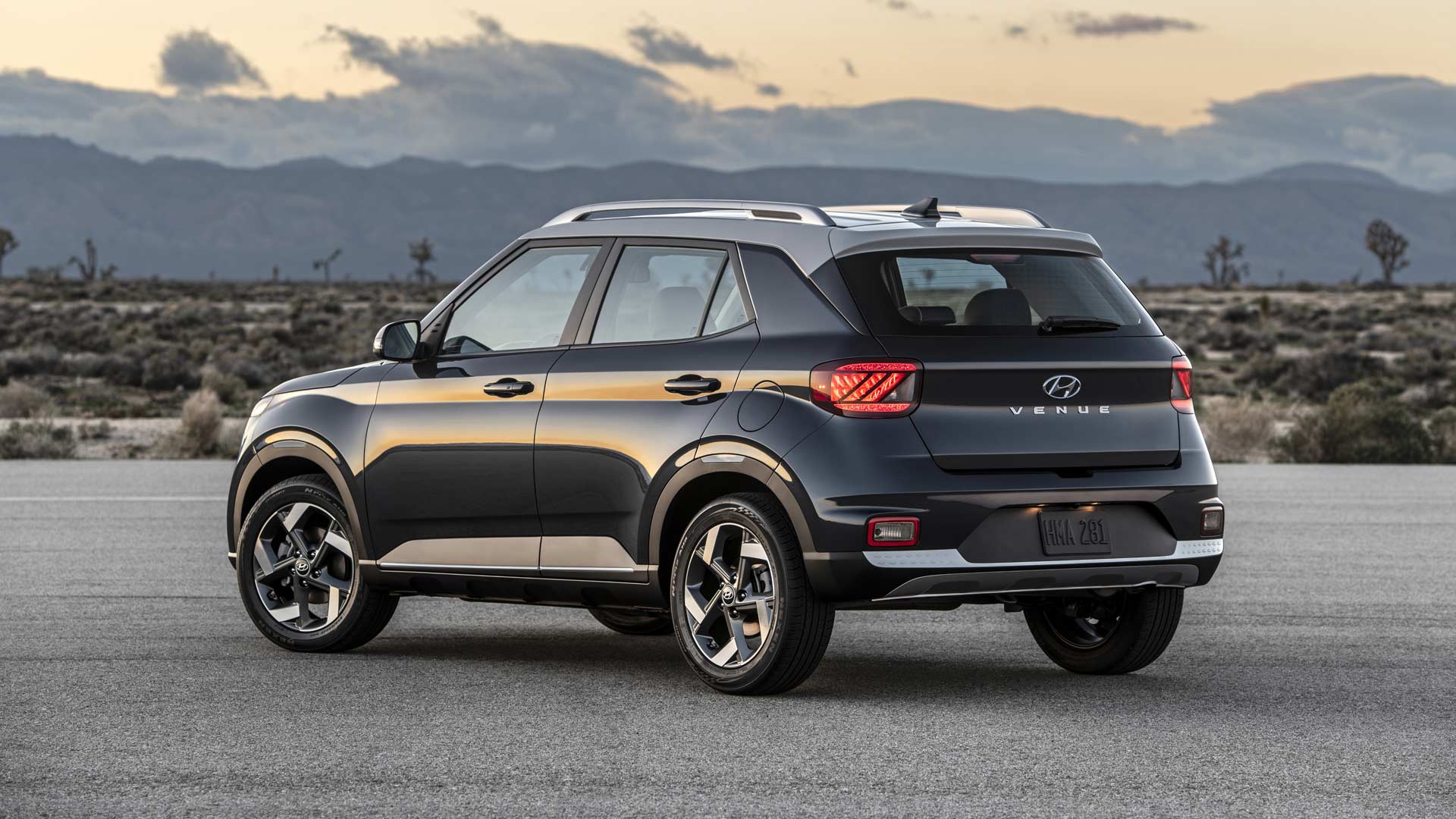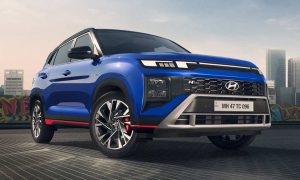The Venue is an extremely important vehicle for Hyundai when it comes to the Indian market, which is why an India-spec car also made its debut yesterday along with the International-spec model we’re seeing here. The former was unveiled aboard a cruise ship near Goa, while the latter in New York.
The Venue looks nothing like the Carlino Concept we saw more than 3 years ago, which I think is a good thing. The Carlino wasn’t very convincing at all.
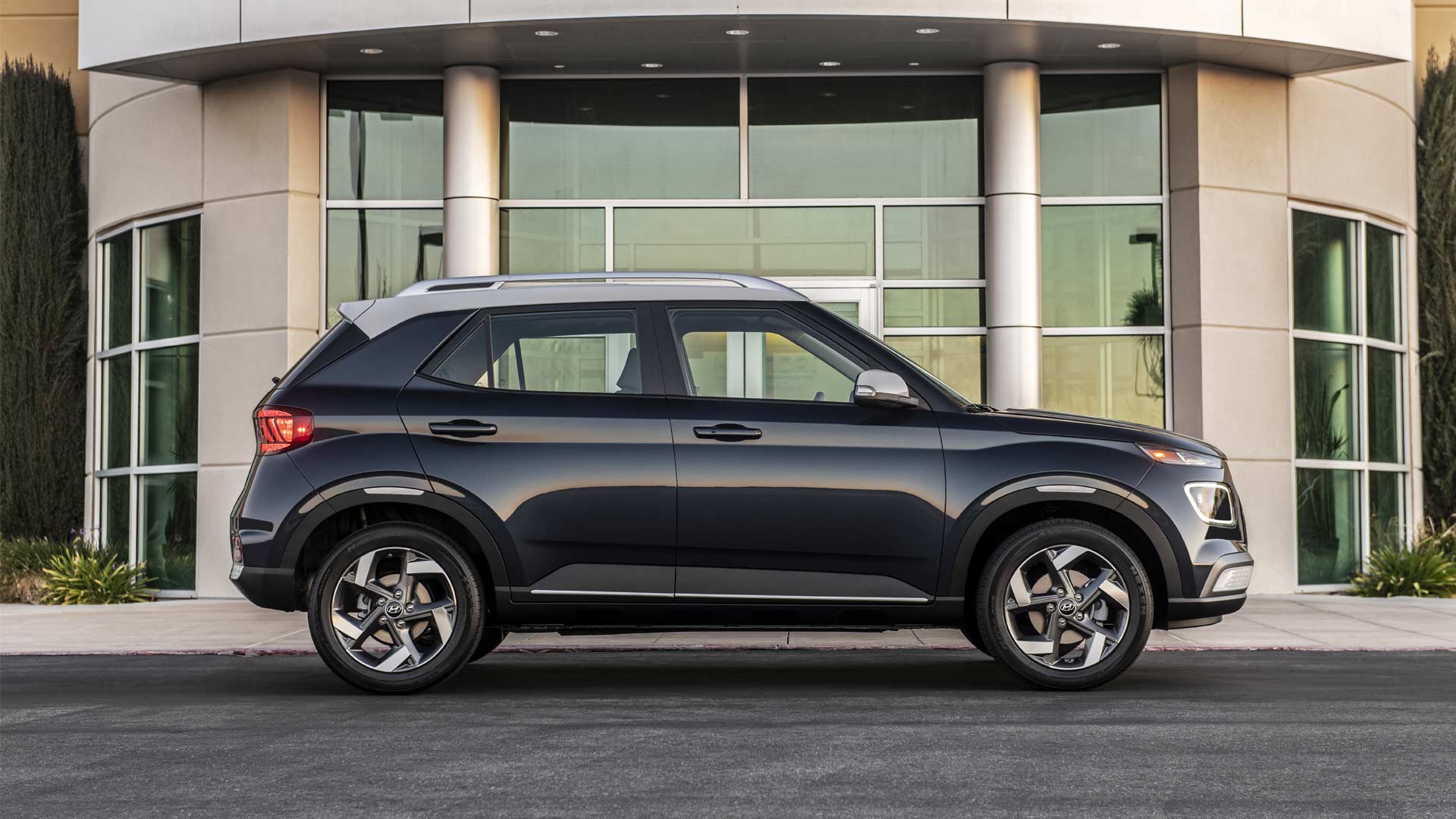 Contrasting roof..
Contrasting roof..
The Venue looks like a shrunken version of the Creta, especially the side profile. It follows the new design trend for SUVs, the dual-lamp set-up, along with the Hyundai signature cascading grille. The small SUV rides on 15-inch alloy wheels as standard while the buyers can opt for 17-inch ones.
The front fascia might not convince everyone, but the rear-end looks incredibly neat, especially the tail lamp detailing.
If you’re interested in dimensions, the Venue measures 4,036 mm in length, 1,770 mm in width and 1,565 mm in height. Wheelbase measures 2,520 mm. Clearly, this SUV is smaller than the Kona.
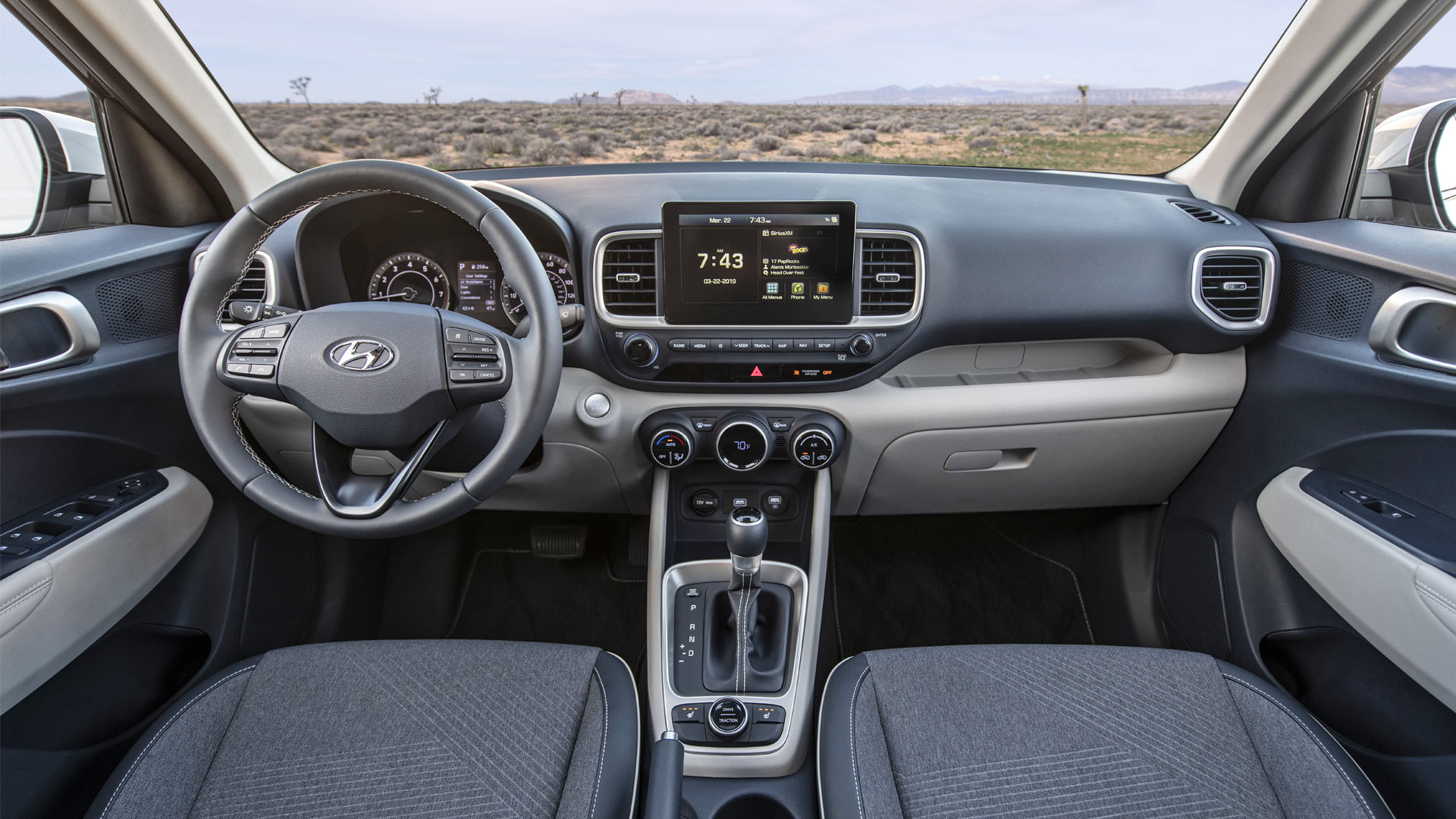
Considering the segment, the Venue’s interior has a premium touch compared to its competition. The dashboard looks rather busy, yet appears functional and neatly laid out.
Features include an 8-inch touchscreen infotainment system with Apple CarPlay and Android Auto compatibility. For those who opt for navigation, free Real-Time Traffic is provided by HERE and free map updates are included via Hyundai MapCare for 3 years.
More features include a 3.5-inch TFT instrument cluster display, Dual Charging USB (USB fast charging and USB 2.0 data reading), Rear View Monitor, heated front seats and heated side mirrors, and a power sunroof.
The Venue also gets Hyundai BlueLink connected car technology that we read about a few days ago. The BlueLink has been integrated with Amazon Alexa and Google Assistant, which works with devices such as Amazon Echo or Google Home. Certain features of the car can be controlled remotely with voice commands.
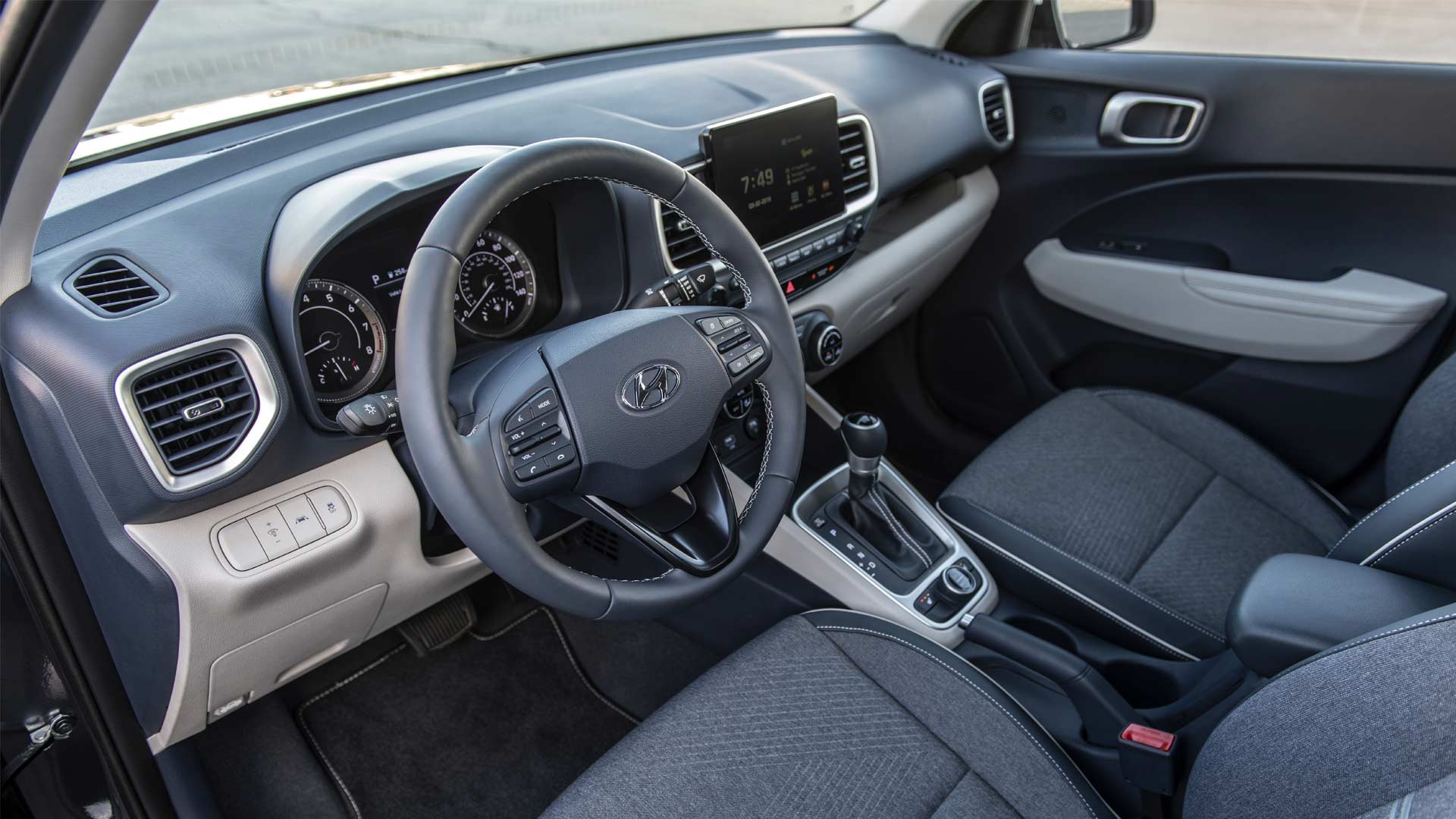
As for advanced safety technologies, the Venue is equipped with Forward Collision-Avoidance Assist (FCA), Lane Keeping Assist (LKA), Blind-Spot Collision Warning (BCW), Driver Attention Warning (DAW), and Rear Collision Cross-Traffic Warning (RCCW).
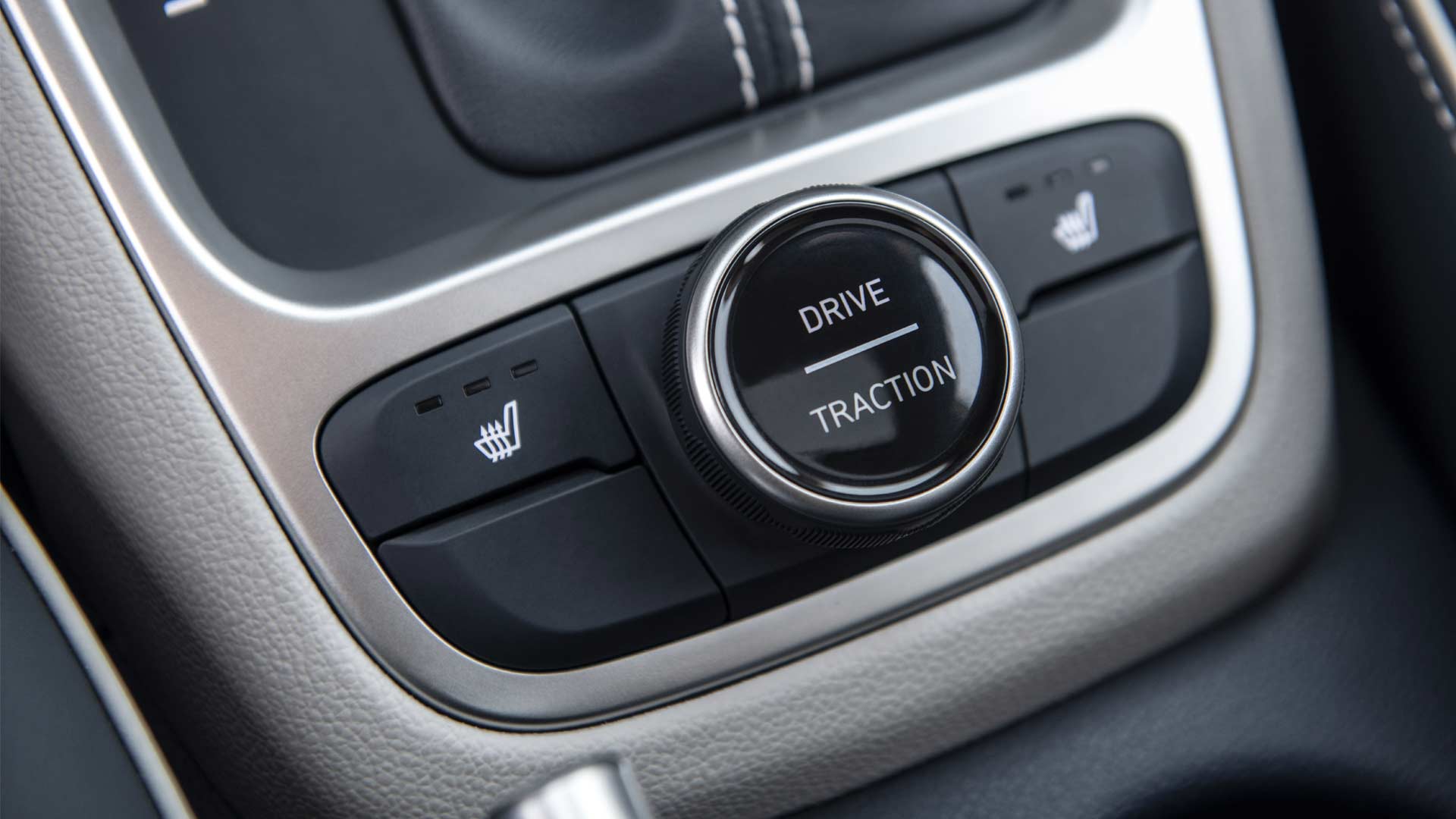
Although the Venue is front-wheel drive, the drive modes include a snow mode for better traction.
Powering the Venue is a 1.6-litre 4-cylinder petrol engine paired with a 6-speed manual transmission, or Smartstream IVT (Intelligent Variable Transmission) which appears to be an in-house developed CVT. Hyundai estimates the Venue to deliver up to 33 miles per gallon (City/Highway combined). Some markets are expected to get a 1.4-litre turbo petrol engine as well.
India
As mentioned before, the Venue is an important vehicle for Hyundai India. The SUV will compete against established players such as Vitara Brezza, Ford EcoSport, Tata Nexon and the newcomer XUV300.
Which means that the India-spec Venue must squeeze itself even more into the sub-4m. The wheelbase is 20 mm shorter as well.
As for powertrains for the Indian market, the Venue will get a 1.2-litre 4-cylinder naturally aspirated petrol engine (83 hp, 115 Nm) paired with a 5-speed manual transmission, 1.4-litre 4-cylinder turbocharged diesel engine (90 hp, 220 Nm) paired with a 6-speed manual transmission, and a 1.0-litre 3-cylinder turbocharged petrol engine (120 hp, 172 Nm) paired with either a 6-speed manual or a 7-speed dual-clutch automatic transmission.

Leave a Reply
Note: Comments that are unrelated to the post above get automatically filtered into the trash bin.
